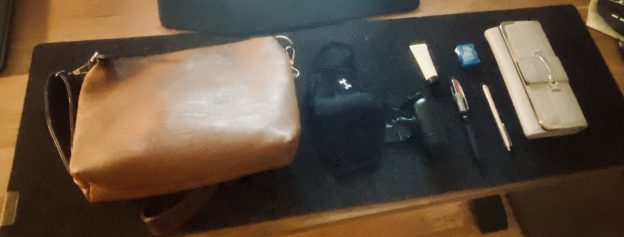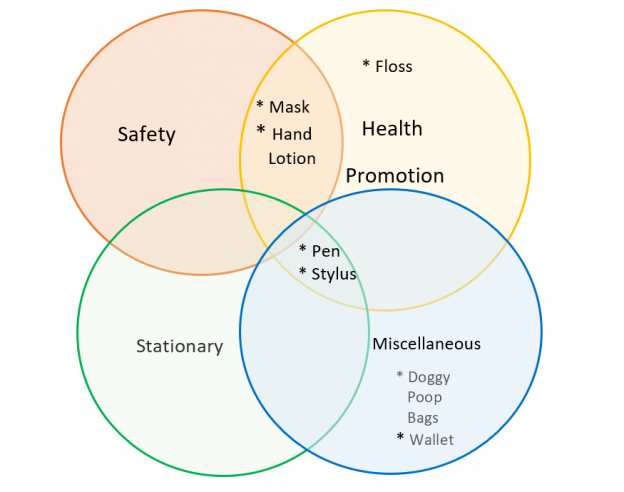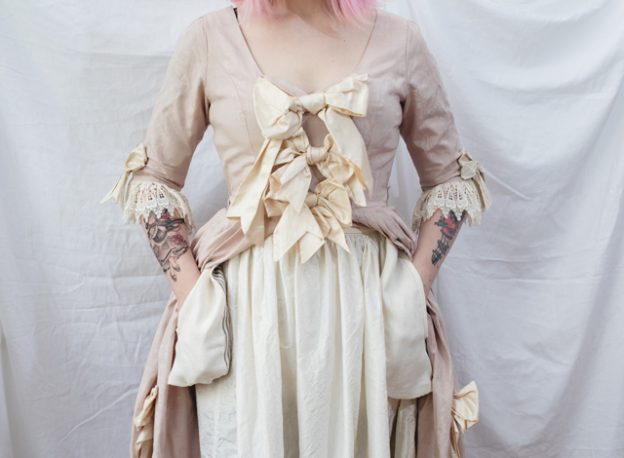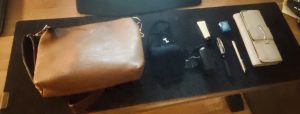 I use this bag almost daily in the summer/winter/fall, whether for a walk or out for dinner. I feel that this bag is a symbolic representation of exactly who I am. I live my life based on what I need, which prevents it from clutter. Through good habits, I get to enjoy the lightness of my bag as I take this bad everywhere I go, and I am comforted knowing that everything I need for the day is in my bag. It was Kondō’s (2017) words that prompted this transformation when she said, “The only tasks that you will need to continue for the rest of your life are those of choosing what to keep and what to discard and of caring for the things you decide to keep.” This small bag contains what I need when travelling outside of my home, and items can fit into four categories: 1) safety, 2) health prevention, 3) stationary, and 3) finance. First, however, I will reflect on how text technologies changed into various forms of text shape we use to communicate in a progressively global world throughout history. According to Postman (1992), language is a technology in that it is a practical art—an invention to facilitate communication. Therefore, language is technology because it is a practical art to facilitate communication (Postman, 1992). Hence, it is essential to understand how communication technologies have changed through history, mainly writing technologies, and how they influence communication styles and genres.
I use this bag almost daily in the summer/winter/fall, whether for a walk or out for dinner. I feel that this bag is a symbolic representation of exactly who I am. I live my life based on what I need, which prevents it from clutter. Through good habits, I get to enjoy the lightness of my bag as I take this bad everywhere I go, and I am comforted knowing that everything I need for the day is in my bag. It was Kondō’s (2017) words that prompted this transformation when she said, “The only tasks that you will need to continue for the rest of your life are those of choosing what to keep and what to discard and of caring for the things you decide to keep.” This small bag contains what I need when travelling outside of my home, and items can fit into four categories: 1) safety, 2) health prevention, 3) stationary, and 3) finance. First, however, I will reflect on how text technologies changed into various forms of text shape we use to communicate in a progressively global world throughout history. According to Postman (1992), language is a technology in that it is a practical art—an invention to facilitate communication. Therefore, language is technology because it is a practical art to facilitate communication (Postman, 1992). Hence, it is essential to understand how communication technologies have changed through history, mainly writing technologies, and how they influence communication styles and genres.
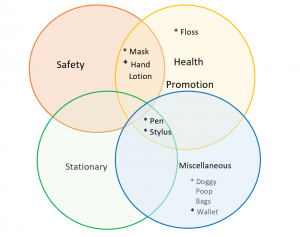
Safety (Latin-salvitas)-Protection & Health (Old English hǽlþ)-Soundness of body, Promotion (Latin- prōmōtiōn)- encouragement
As a nurse and educator, I spend my day using technology. What technology allows me to do is to use to solve problems and achieve goals. There are many examples of texts; for example, my mask speaks in that I am compliant with the government mandate that is must wear a mask in public places. Did I carry a mask in my purse before the pandemic? No. It is science and technology through literacy; that helped to shape and construct the mask’s present-day function and appearance. As Scholes (1992) observes, “we find that the notion of joining as in carpentry or constructing as in metalwork, has been replaced by weaving, as the guiding concept of textual fabrication” (p. 143).
Stationary– (Latin-statiōnārius)- compound
In terms of “text technologies,” my stylus corresponds to this definition. I carry this capacitive technology to use on my iPhone and iPad for emailing and messaging (messenger). My technology tools (iPhone and iPad) are essential for both my professional life and student life. The stylus allows me to tap into my electronic devices for work on any touchscreen technology device seamlessly. As a result, I stick to what I need and know works; therefore, it provides me with a sense of comfort.
Miscellaneous (Latin miscellāneus)- of various kinds
As Scholes (1992) notes, the definition of text has evolved and will continue to change. In saying this, what is in my wallet is technology. If you were to open my wallet, you would find it contains my credit cards and my cheques. As Postman (1992) observes, the text has evolved into practical art. For example, you would find my government ID card it contains all of my information, date of birth, and address linked directly to me. Through digitally typed text, this one card has an abundance of information that provides information about me.
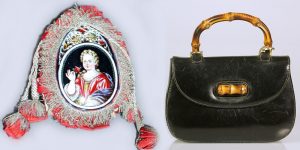
On the left is c1680. French. Silk, metal. metmuseum and on the right is "1965. Italian. Gucci. Leather, wood, metal. metmuseum. . Author unknown, source 5-minute History
My shoulder bag is six years old, and in the 16 and 17th centuries, pursues were not worn over the shoulder as they said it could get caught on their dress, so they wore them under their dresses. I believe that text changes in similar ways depending on certain factors and intended outcomes. Since its introduction, the word text morphs and evolves in meaning as language is living due to new literacies. My small bag represents physical activity and technology. I did not include my iPhone in the photo as it was not in my purse when it was emptied, but it would be in there if I were going out. Years from now, I wonder how an archaeologist would describe shoulder bags and their use. If my iPhone is in my small brown shoulder bag, they will detect the year. They would associate the mask with the pandemic I experienced during this decade. If they could unlock my iPhone, they would see all my family pictures and my adventures.
References
Postman, Neil. (1992). Technopoly: the surrender of culture to technology. New York : Knopf,
Scholes, Robert 1992. Canonicity and textuality. In: Gibaldi, Joseph (ed.),
Introduction to Scholarship in Modern Languages and Literatures.
New York: The Modern Language Association of America (MLA),
138–158.
Image:
